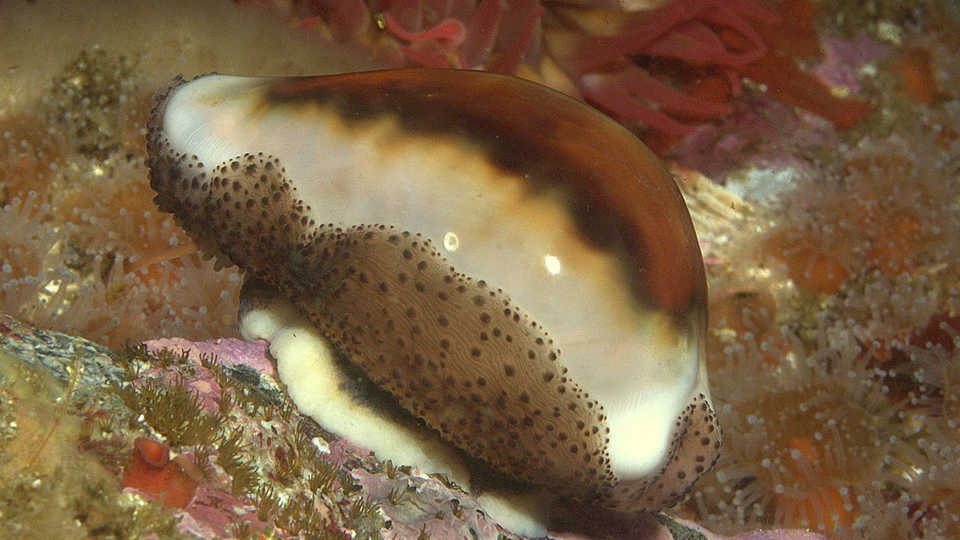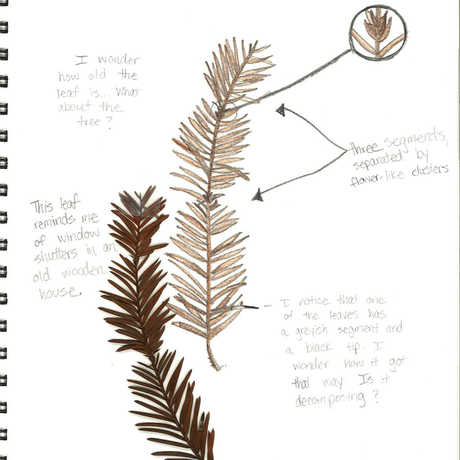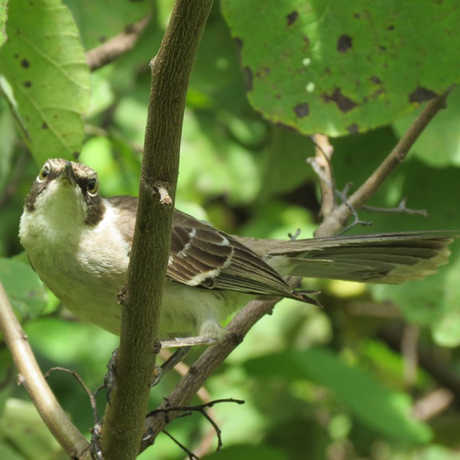
© Ed Bierman
By learning the skill of scientific sketching, students will learn to better observe and document the natural world. This simple-to-lead activity gets them closer to constructing explanations for the variation of traits seen within a species.
At the end of this lesson students will be able to:
- identify patterns of similarities and differences in traits shared between specimens.
- create a scientific sketch that communicates information that can be used by other scientists.
- construct an explanation for how an individuals’ variation might effect the survival of a larger population.
- specimens from same species (1 per student)
- student field journal (1 per student)
- pencils
- make copies of the student field journal (1 per student)
- gather several specimens of the same species (1 per student)
Teacher Tip: You can choose whatever type of specimen that you like, but they should all come from the same species. We’ve used a variety of types of specimens from leaves to peanuts to oranges to sea shells. Make sure that whatever specimens you are collecting for this activity, have been collected in a sustainable manner.
If your students have already learned about genetics, take a moment to review that DNA is the genetic material found in the chromosomes of cells. Review that DNA is a molecule composed of genes and that mutations are genetic changes that result in increased variation within a species.
If your students are new to heredity, ask them whether they think all individuals of the same species look the same. Then ask, why they think there is variation within species.
Tell students that in this activity they will use scientific observation skills to observe a range of natural variation within a single species, and then think about what environmental factors might influence the survival of specific variations over another.
- Select as many specimens of the same species as there are students and place them in a central location.
- Explain that these are specimens of a single species.
- Let all students examine all specimens. Ask them to look for variation.
- Ask each student to select a specimen.
- Pass out the student field journals and tell students to sketch their specimen. Encourage students to measure the specimen and add any descriptive notes that will help them identify their specimen.
- When they have finished the field journal, have small groups (5 to 8 students) mix their specimens up and try to find them again based on their sketches.
- Have students reflect on what parts of the sketch helped them identify their specimen. Then, give them a chance to add a few more details to their sketch.
- Mix the specimens back together again, and have students switch sketches with a classmate. Can someone who didn’t observe the same specimen identify it based on the sketch and notes of the first student?
- Teacher Tip: This emphasizes the importance of acute observation and detailed documentation, especially when other scientists will be using your work.
- Teacher Tip: This emphasizes the importance of acute observation and detailed documentation, especially when other scientists will be using your work.
- Have students reflect on what they think a good scientific journal entry would entail. Ask questions such as: What observations were particularly useful in finding your specimen or your classmate’s specimen? What other details, words or measurements could have made it easier to find the correct specimen? How does sketching vs. taking a picture help you notice the details of a specimen?
- Have students read about a specific example of species variation that scientists have studied: www.mothscount.org/text/63/peppered_moth_and_natural_selection.html
- Ask students to use the 2nd side of their field journal to think about how the variations they observed in their specimens might be beneficial or detrimental for an individual.
- Then, discuss and reflect upon the following questions.
- What types of variations did we see in the specimens? (Color, size, shape, number of spots, etc.)
- How do you think variation in these species comes to be? (Variation arises through different combinations of genes inherited from the parents and through the continual mutation of genes. Some variation among individuals is not genetic, but is due to specific events or environmental influences during an organism’s life.)
- Why is variation important in populations? (Variation increases the likelihood that at least some individuals will survive to reproduce no matter how environmental conditions change. Variation is also a key step in the evolutionary process. It is a prerequisite for evolution to occur.)
- Can you see all genetic variation? (No. A lot of genetic variation is hidden from the eye.)
“Variation fuels the process of evolution. No two individuals of any species are exactly alike. Even if they look similar, differences in their genes distinguish one from the other. While subtle, those differences may allow some to live longer and produce more offspring than others. That process – called natural selection – drives evolution.” – California Academy of Sciences exhibit text.
Variation is a fundamental prerequisite in order for evolution to occur. To see natural variation, all you have to do is look around you. Human beings, as with all species, exhibit a range of natural variation that is visible. We have different shaped faces, different eye colors, different skin colors, and much more. We also have variations that are not visible in our appearance, yet they are observable, such as human blood type.
These natural variations within a single species arise for a variety of reasons. One major reason that organisms who reproduce sexually have variation is because each individual has a different combination of genes inherited from their parents. But, there is still some variation in variation as is clearly evident in siblings who have the same parents but inherit different genes making them genetically different from one another.
In addition to genetic variation resulting from parents, other causes of genetic variation include the movement of genes from one population to another (gene flow), and changes in the DNA (mutations), which are constantly arising within natural populations.
Furthermore, variation can be a result of different environmental factors. For example, an animal that has access to larger prey may grow larger, while an animal that has only access to smaller prey may not grow as big.
In this activity - Observing Variation – students will observe variation within a single species. Practicing observation is an important scientific skill. After all, Darwin’s observation of variation within and between species was the initial step in his development of the theory of evolution by natural selection.
Grade Seven
Life Sciences: Evolution
3a. Students know both genetic variation and environmental factors are causes of evolution and diversity of organisms.
Grades Nine through Twelve
Life Sciences: Evolution
7c. Students know new mutations are constantly being generated in a gene pool.
7d. Students know variation within a species increases the likelihood that at least some members of a species will survive under changed environmental conditions.
The items listed below indicate how the activities support the three dimensions of the Next Generation Science Standards:
- Science & Engineering Practices
- Models
- K-2: Use and share pictures, drawings, and/or writings of observations.
- Constructing Explanations
- 3-5 Use evidence (e.g., measurements, observations, patterns) to construct or support an explanation or design a solution to a problem.
- Identify the evidence that supports particular points in an explanation.
- Models
- Disciplinary Core Ideas
- 1.LS3.B: Variation of Traits. Individuals of the same kind of plant or animal are recognizable as similar but can also vary in many ways. (1-LS3-1)
- 3.LS3.B: Variations of Traits. Different organisms vary in how they look and function because they have different inherited information.
- Crosscutting Concepts
- K-2: Patterns in the natural and human designed world can be observed, used to describe phenomena, and used as evidence
- 3-5: Similarities and differences in patterns can be used to sort and classify natural phenomena.
- 6-8 Patterns can be used to identify cause and effect relationships.
Remember, performance expectations are not a set of instructional or assessment tasks. They are statements of what students should be able to do after instruction. This activity or unit is just one of many that could help prepare your students to perform the following hypothetical tasks that demonstrate their understanding:
- 1-LS3-1. Make observations to construct an evidence-based account that young plants and animals are like, but not exactly like, their parents.
www.nextgenscience.org/1ls3-heredity-inheritance-variation-traits
- 3-LS3-1. Analyze and interpret data to provide evidence that plants and animals have traits inherited from their parents and that variation of these traits exists in a group of similar organisms.
www.nextgenscience.org/3-ls3-1-heredity-inheritance-and-variation-traits
- MS-ESS3-3. Develop and use a model to describe why structural changes to genes (mutations) located on chromosomes may affect proteins and may result in harmful, beneficial, or neutral effects to the structure and function of the organism.
www.nextgenscience.org/ms-ls3-1-heredity-inheritance-and-variation-traits
Butterfly Conservation (2015). Peppered Moth and natural Selection. Retrieved March 25, 2015 www.mothscount.org/text/63/peppered_moth_and_natural_selection.html
California Academy of Sciences. (2008). “Evolving Story”, exhibit text.
Coolidge-Stolz, E., Cronkite, D., Jenner, J., Pasachoff, J. M., & Wysession, M. (2008). California: Focus on life science. Boston: Pearson Prentice Hall.


